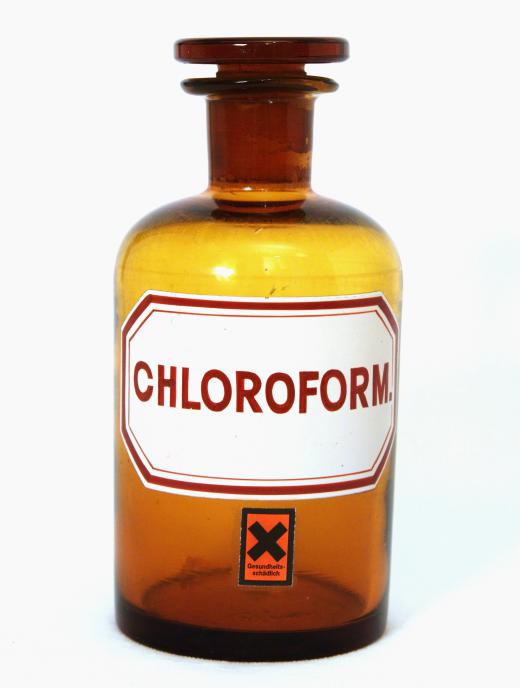What Is Trichloroethylene?
 Karyn Maier
Karyn Maier
Trichloroethylene is a chemical compound classified as a chlorinated hydrocarbon. It is a nonflammable and colorless liquid, but is characterized by a sweet odor. Aside from being available commercially under various trade names, trichloroethylene is also referred to as Trike and Tri, and simply by the acronym TCE. While the compound is so named under the nomenclature standards of the International Union of Pure and Applied Chemistry (IUPAC), this compound is also known by several other standard chemical names, including 1,1,2-Trichloroethene, 1,1-Dichloro-2-Chloroethylene, Acetylene Trichloride and Trethylene.
Used primarily as an industrial solvent and degreaser today, trichloroethylene was first put to use in the 1920s to aid in the extraction of vegetable oils from plant sources, such as coconut, soy, and palm. It was also commonly used to extract flavoring agents from certain spices and herbs, such as hops, in addition to decaffeinating coffee beans. From the 1930s through the early 1960s, the vaporized form of trichloroethylene served as a gas anesthetic substitute for chloroform and ether. However, when it was later determined this compound is a neurotoxin, its application in the food industry or as an anesthetic was discontinued.

Information about the adverse effects on human health from exposure to trichloroethylene has been largely obtained from workplace incidences where exposure has surpassed occupational air standards. Since the compound is not completely soluble in water, it tends to evaporate quickly from surface water and remain in the air as vapor. When inhaled, the compound can suppress the central nervous system and produce symptoms similar to being intoxicated. In addition, high or long-term exposure levels may lead to heart abnormalities, compromised immunity, and liver and kidney damage.

There is abundant evidence that trichloroethylene has become systemic in the environment. It is frequently found in soil and groundwater samples where it binds to water particles and can reside for long periods of time. In the home, exposure can occur from the frequent use of typewriter correction fluid or spot removers, in addition to drinking, bathing, or swimming in water that has been contaminated with trichloroethylene.

The Environmental Protection Agency (EPA) and the Occupational Safety and Health Administration (OSHA) have devised regulatory guidelines pertaining to the proper use and disposal to reduce risk to the environment and human health. In the workplace, the maximum level of exposure is limited to 100 parts of trichloroethylene per million parts of air (100 ppm) for an 8-hour workday, 40-hour week. Drinking water that does not exceed 5 parts of trichloroethylene per billion parts water is considered safe for human consumption.
AS FEATURED ON:
AS FEATURED ON:














Discuss this Article
Post your comments